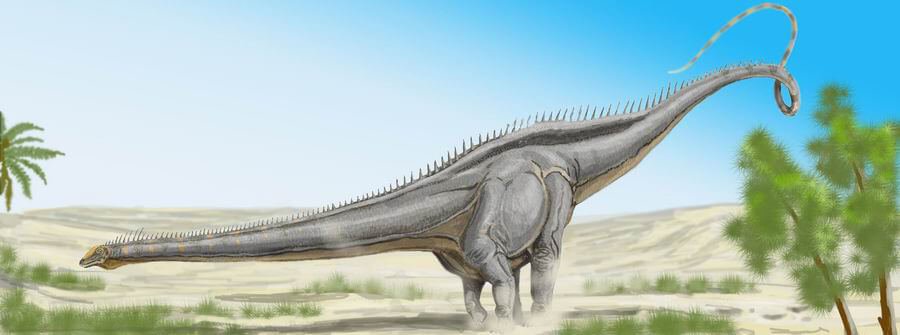What is a diplodocus?

A diplodocus (pronounced like duh-plo–duh-kuhs) is a long-necked dinosaur and was one of the longest animals ever to have lived. It’s a member of the group called sauropods (pronounced saw-ruw-pawdz), herbivore (plant eaters) dinosaurs known for their long necks, and among the largest animals to have ever walked on earth.
Find out where, when, and how diplodocus lived, and learn more about the fantastic sauropod in this article.
When did diplodocus live?
It lived 154–152 million years ago during the Late Jurassic period in what’s now North America, and it probably had a lifespan of 80-100 years.
How big was it?
Diplodocus weighed about 15 000 kg (33 000 lb); that’s as much as 3 elephants together! And it was around 24 meters (79 ft) long from nose to tail, that’s 3 times the length of an elephant. It could probably get bigger, though. An incomplete skeleton of a Diplodocus was found, and based on the size of the bones, the dinosaur may have had a size of more than 32 meters (105 lbs).
Keep in mind, when paleontologists discover a dinosaur skeleton, they don’t know if they found an adult or a juvenile that was still growing.
Paleontologists believe that this super-giant stretched its neck horizontally, not vertically, as often depicted in movies. In other words, it wasn’t able to hold its head much higher than its body was.
What did diplodocus eat?
Based on its size and teeth, it was probably an herbivore (plant-eater) like most sauropods. Diplodocus teeth show wear patterns normally associated with cropping vegetation. So you can say that this giant dinosaur used its long neck for grazing on tall swamp grasses and other plants near the water’s edge of a lake, maybe in a similar way as present-day elephants do.
How did they live?
In herds. Diplodocus lived in herds!
Many fossil skeletons have been found in groupings, which suggests that they lived in herds. Scientists think these herd animals were social and may have cared for their young.
Grouping made them safer from predators like the Allosaurus, but it probably also helped them find food: more leaves could be cropped with less effort if many mouths were eating at once. Rather like the way a flock of birds can find more bugs than an individual bird.
They likely spent 80% of the day eating plants. Then, they spent the rest of the day moving between one food source and the other. Because of their weight, diplodocus was a very slow animal, walking about 8 km/h (5 mph). But why walk faster when you can graze all day, right?
Diplodocus Facts In A Nutshell
- Diplodocus was a sauropod.
- It’s one of the longest animals ever to have lived: up to 105 ft (32m) long!
- Diplodocus was an herbivore and spent all day eating plants.
- Fossils have been found in North America.
- Lived 154–152 million years ago during the Late Jurassic period.
- Lived in herds.
- Diplodocus is pronounced duh-plo–duh-kuhs.

